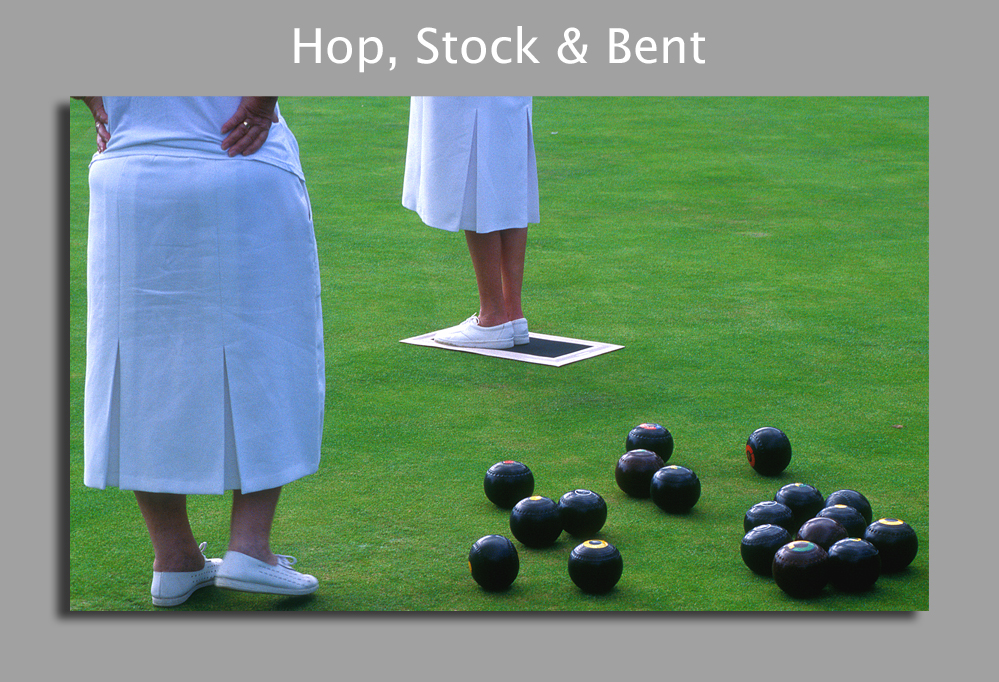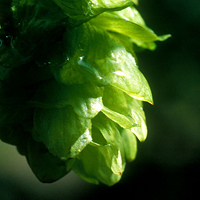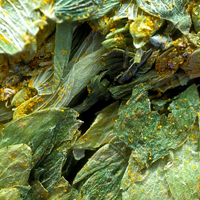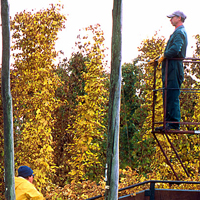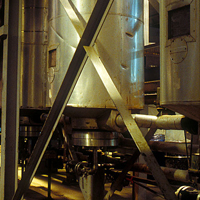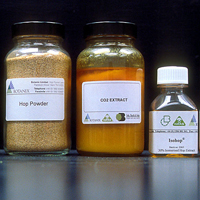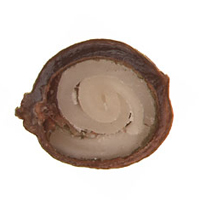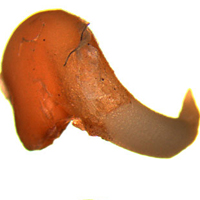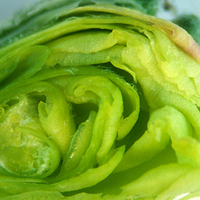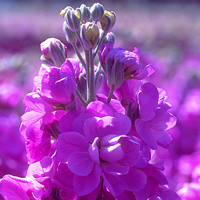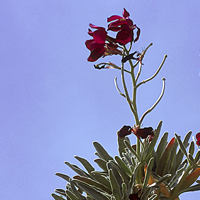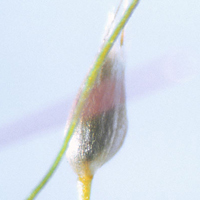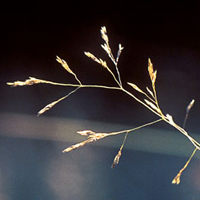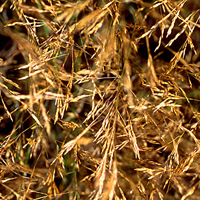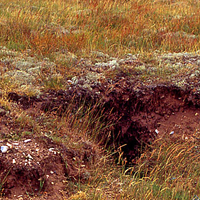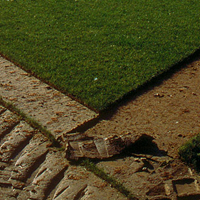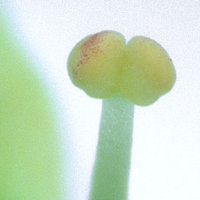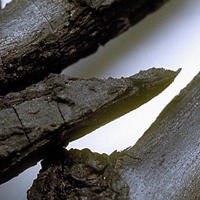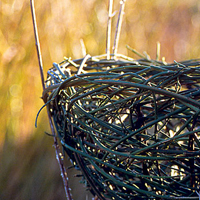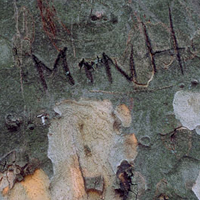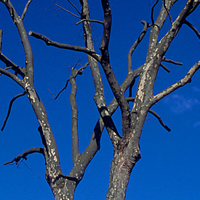Hop, Stock & Bent is a photo-biography of five common plants: hop, scented stock, bent grasses, the spindle tree and the London plane tree. Françoise chose them because she liked their names and because they are ordinary plants, rarely noticed. She researched their uses, the places where they grow wild, where they are cultivated and the people working with them. She also spent time with scientists at the Millennium Seed Bank Project, part of the Royal Botanic Gardens, dissecting and photographing seeds under microscope. The project was shown as an exhibition of hand-made photography books before becoming an interactive digital animation which has now been made into a series of videos, shown on this page.
The videos have a strange look and feel. On most of them, you can see a mouse pointer moving across the screen - the original interactive animations asked the viewer to select images and navigate through the content as they so wished. The mouse has now replaced the viewer, a bit like a robot would do. The result has a somewhat 'old silent film' look.
Each plant is presented separately: first through its anatomy and habitats, both wild and cultivated, and secondly through the eyes of the people who work with it, play with it or learn from it.
Hop
the plant that makes beer
hop, the plant
Music: folk song The Barley Mow, sung by George Spicer
hop, the people
Music: Irish Beer Songs by the King's River Irish Band
Hop research has taken place at Wye College in Kent, UK, since 1904. The first video above shows some of the work at the station. The research programme closed there in 2007 but a new station has been established since, near Canterbury, also in Kent.
In the past, every hop farm had several oast-houses to dry the fresh hop. The roofs were made of a large flue to assist the draught of a furnace which was at the bottom and sent heat rising through a slatted floor above, where the hop was laid two feet deep. On the roof, a wooden cowl maintained the air flow in the flue by pivoting away from the wind. Dried hop was then raked into a side room and pressed into hessian sacks. The oast-houses were used during one month of the year only, in September. Hop is now dried in large warehouses and the oast-houses are mostly left empty or converted for other uses.
Hop is an essential ingredient of beer brewing. Inside the female flowers are many “lupulin” glands which contain a veritable cocktail of essential oils and resins. For brewing purposes, the most important resins are the alpha acids: They confer bitterness to the beer and have valuable preservative properties. However, the volatile oils also present in the flower are very important for the flavour and aroma of beer. Subtle differences can be found in different hop varieties and brewers choose carefully which ones to use. The oils are very volatile and would be lost in the brewing process if added too early. For that reason, in traditional brewing, some of the hops are added towards the end of the boiling or even right at the end. Brewers use different hop products, depending on their method: dried cones, pellets, powder, resin and other extracts.
The company Botanix, based in kent UK, makes and trades in hop products, as well as other natural plant extracts and essential oils. Dried hop cones are compressed into pellets which are then ground into a powder, from which a resin is extracted using CO2. As a hop merchant, Botanix buys fresh hops from farmers and sells it to brewers. Grading the hop is a central element of the fabrication process, as the quality of the final product depends on the integrity of the original hop. This grading is done as soon as possible after harvest, because fresh hop deteriorates quite rapidly in storage. A specialist grader assesses sample batches, determines their quality, grades them and affixes them a value. Each batch is then matched to clients’ requirements, depending on its characteristics and qualities.
Below, you can listen to Chris Daws, Botanix hop grader, Sales and Services Manager (now retired), describing his work. The interview was recorded in June 2008.
1: beer and hop
play the above interview in a new tab
2: growing hop
play the above interview in a new tab
3: grading hop
play the above interview in a new tab
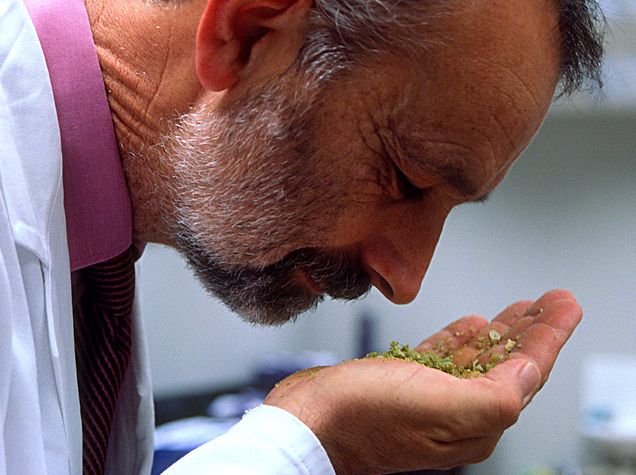
Chris Daws, hop grader
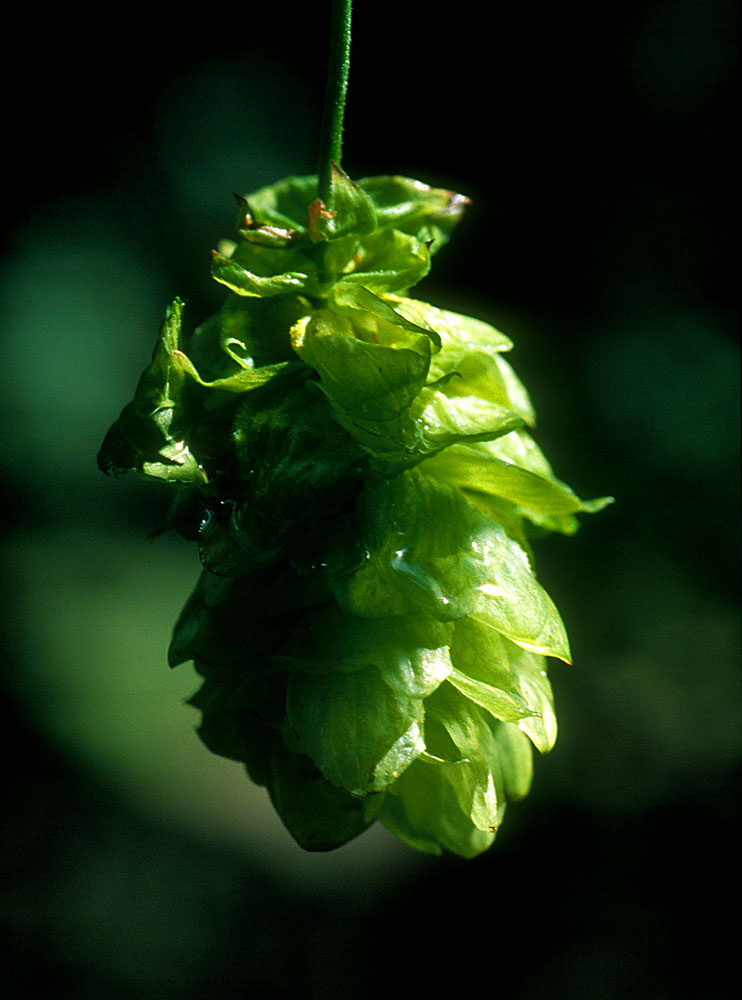
a hop cone, the female flower
hop research, Wye College, Kent, UK
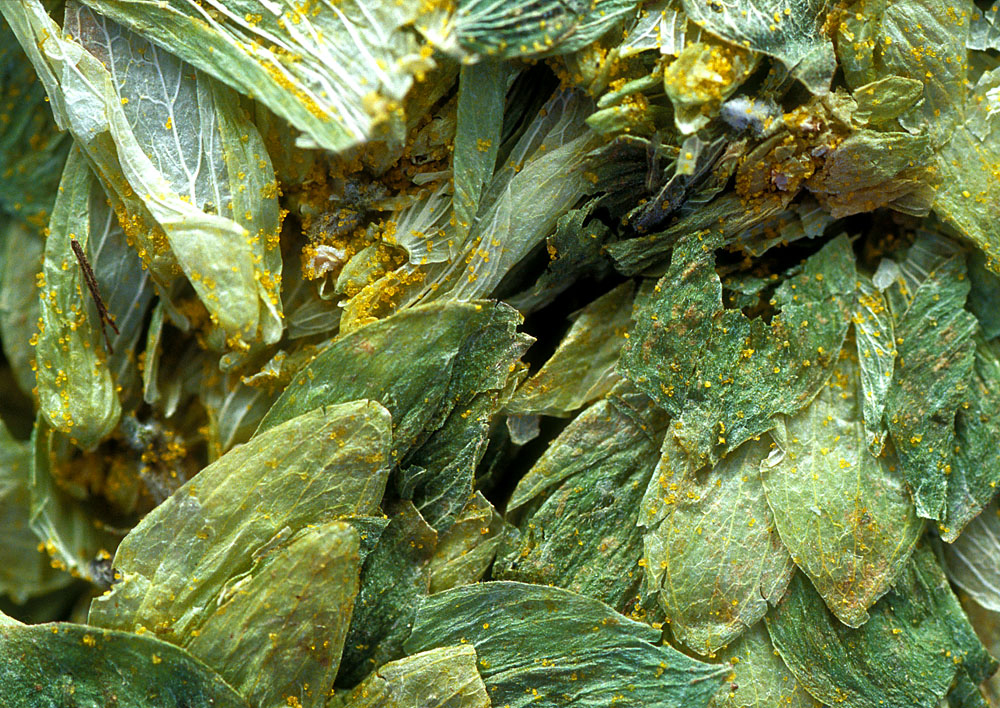
dried hop cones
the yellow lupulin glands can be seen amongst the cone's leaves
hop research, Wye College, Kent, UK
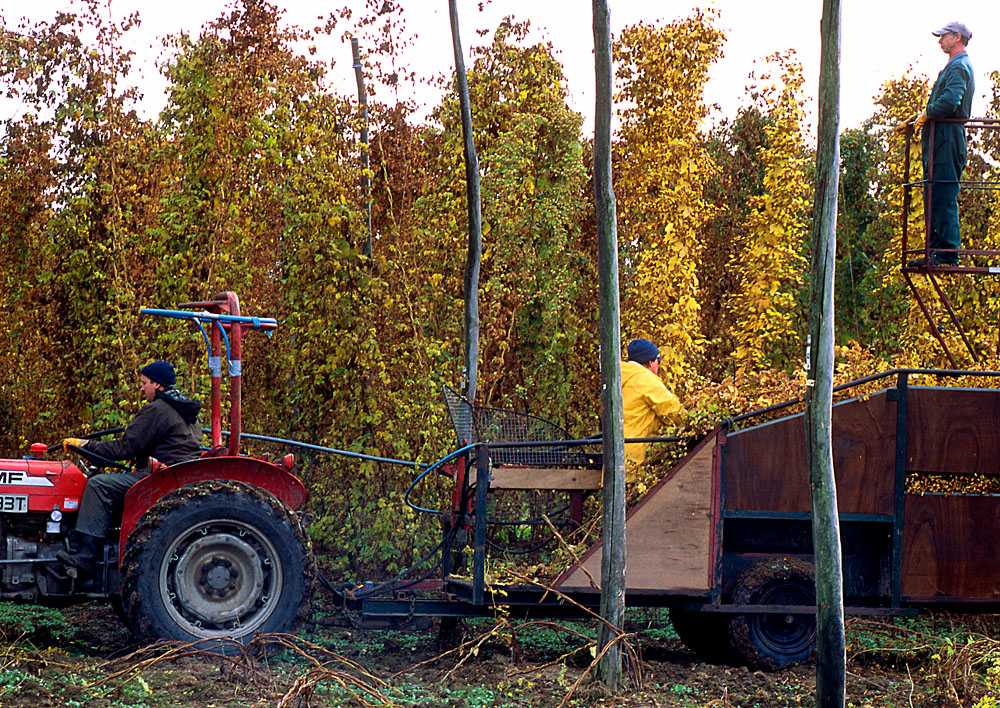
hops being removed in the autumn
hop research, Wye College, Kent, UK

hop resin extraction
Botanix hop traders and producers, Kent, UK
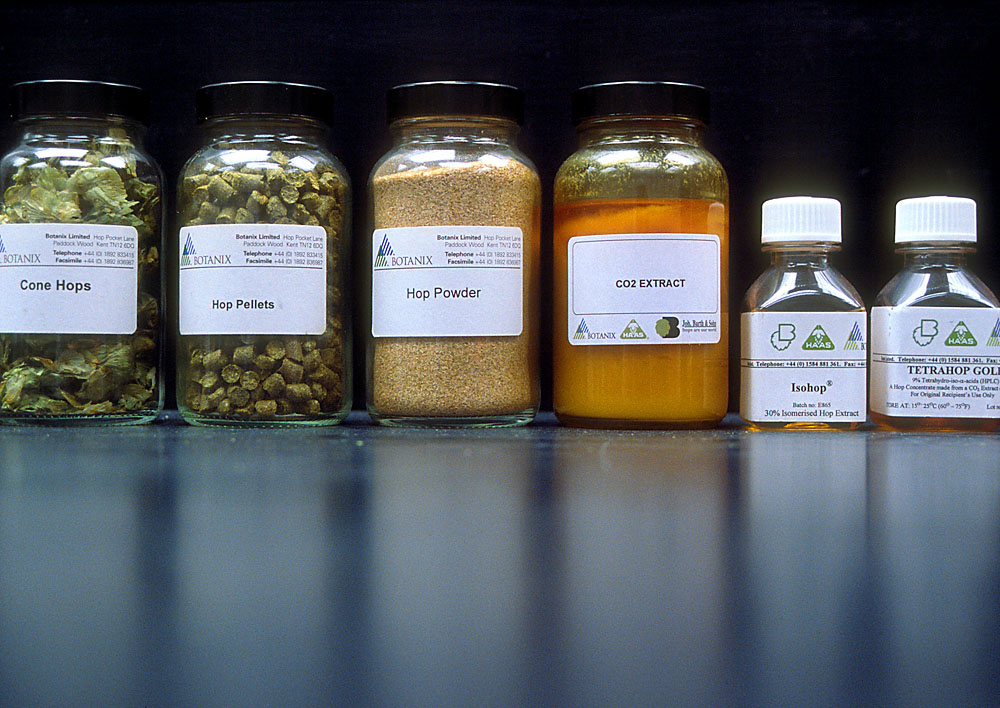
hop products
Botanix hop traders and producers, Kent, UK
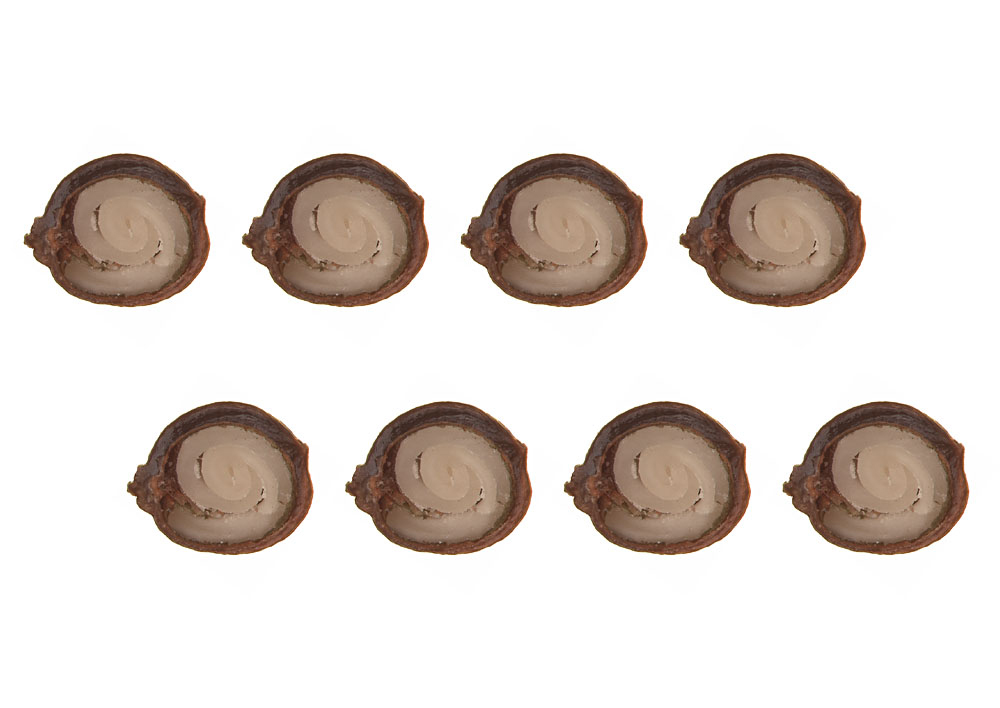
hop seeds
the seeds have been cut in half, showing the embryos curled up inside
Scented stock
the chalk cliffs queen
scented stock, the plant
Music: Erik Satie, played by Klara Körmendi
scented stock, the people
Music: The Art of the Theremin: Clara Rockmore (theremin) and Nadia Reisenberg (piano) play Tchaikovsky
Scented stock, the species Matthiola incana, is a popular type of bedding plant and a favourite cottage garden biennial, alongside wallflowers, mulleins and foxgloves. Stock is also grown as a cut flower for its scent and strong colours. Unlike other flowers, stocks do not cope well with long distance journeys. Therefore, to produce the best cut flowers, they are still grown locally in the UK. Flowers can then reach the shops in just one day whilst keeping their wonderful scent and freshness much longer than if flown from far away.
Wild scented stock is called hoary stock. It is the parent of most of the cultivated varieties. It is a rare UK native plant, found mainly on the chalk cliffs of Sussex and Wales. There, not only does it share the exposed cliff edge with a rich flora of specialised chalk grassland species but it is also one of the few plants adapted to survive clinging onto sheer rock within the cliffs themselves.
The plant is often short lived - usually an annual or a biennial. It produces a rosette of grey green leaves on a thick base, hence the name "stock". It needs sun to grow and flower well, just like its cousins, the wallflowers. Its leaves are covered in fine white hairs which protect them from harsh sunlight.
Shirley Gilbert, the owner of Hill Cottage in Edingthorpe, Norfolk UK, is a member of the Cottage Garden Society and has created a beautiful garden overflowing with ornamental plants and edible produce. She is interviewed here about her gardening philosophy and practice. The interview was recorded in February 2009.
1: a cottage garden
play the above interview in a new tab
2: the organic garden
play the above interview in a new tab
3: the older gardener
play the above interview in a new tab

Shirley Gilbert's cottage garden
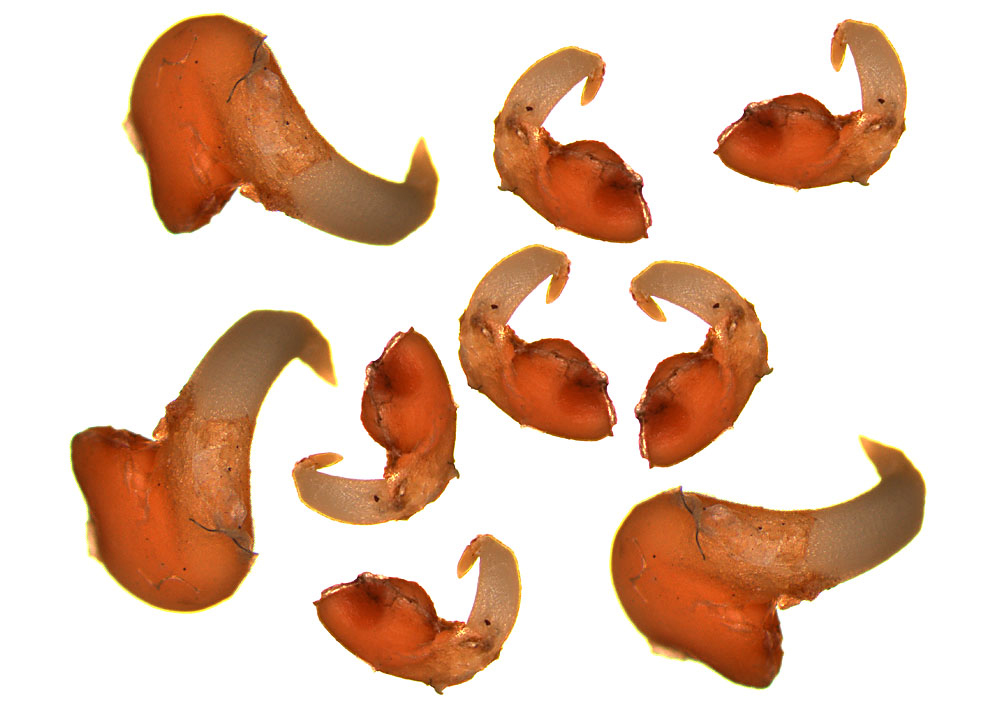
scented stock seeds
with germinating embryos
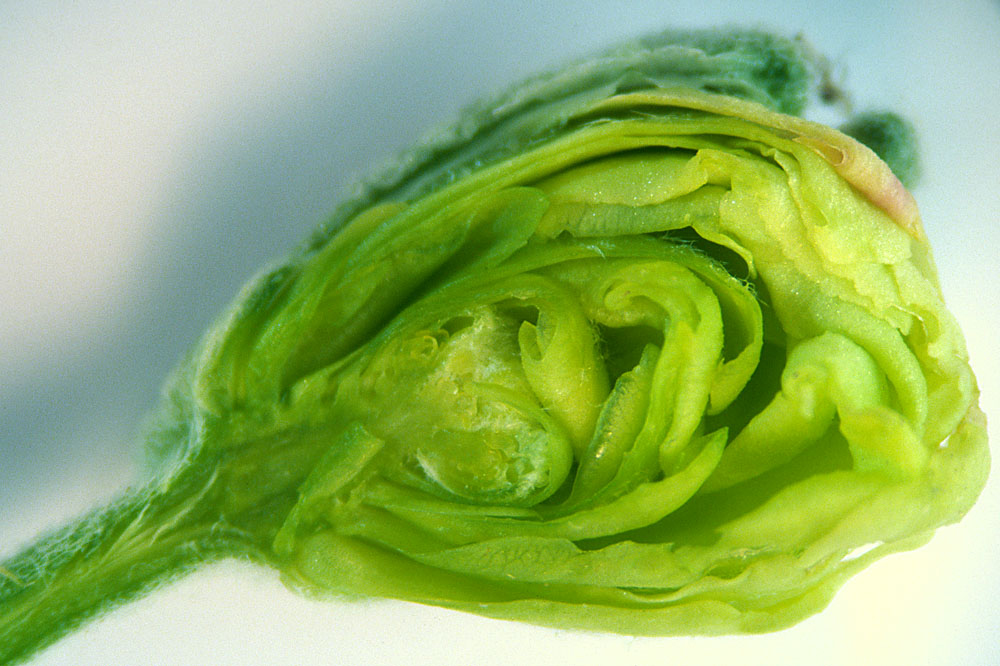
a stock bud cut in half
the bud contains the future petals, stamens and ovary tightly folded within

stock's leaf rosette
the rosette is produced in year one, with the leaves covered in fine white hairs
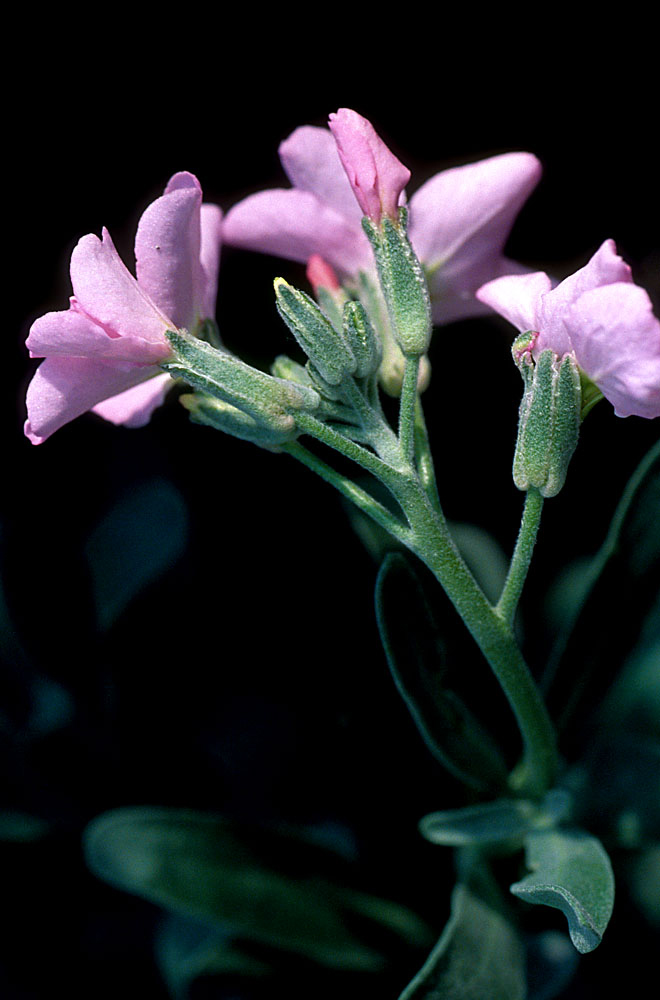
stock's single flowers
each plant produces either single or double flowers

stock's double flowers
the plants with double flowers are grown as cut flowers
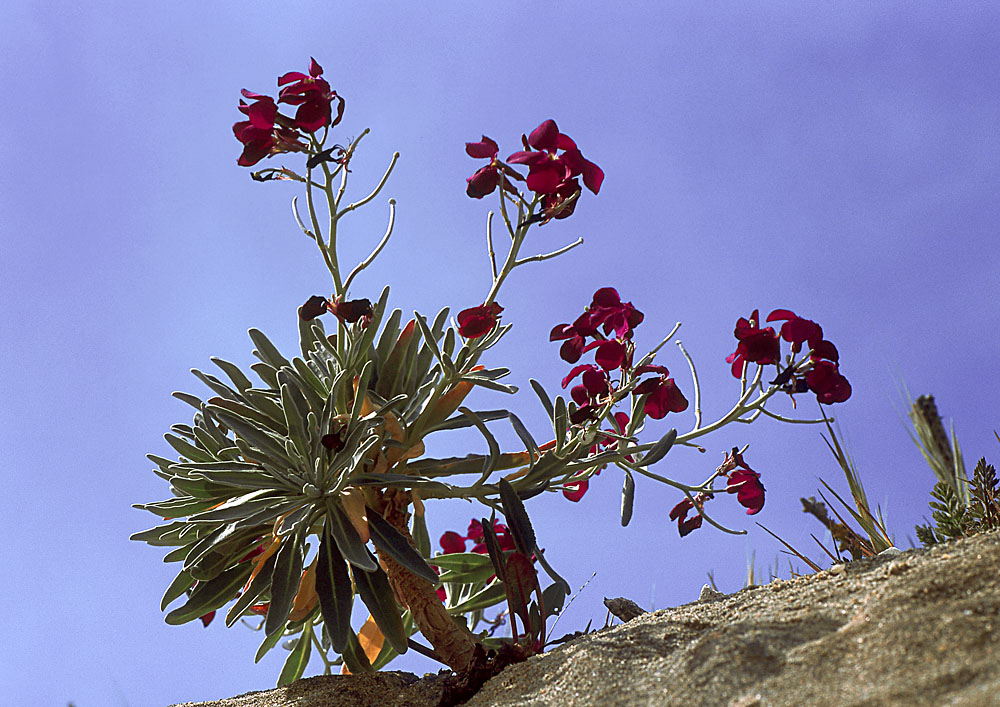
hoary stock
a wild stock growing on chalk cliffs
Agrostis
the bent grasses
bent grasses, the plants
Music by Kimmo Pohjonen
bent grasses, the people
Music by Kimmo Pohjonen
Bent grasses, the Agrostis genus, often have enormous inflorescences forming huge clouds of delicate stems. They are called "bent" because their roots bend and grow horizontally. They form a tight sward and their fine leaves can be mowed close to the ground, which is why they are used on golf tees, bowling greens and cricket squares. They give the balls a firm support for a good smooth run but they need a lot of caring to look good and remain healthy. These fine turfs behave just like top footballers whose performance is vital to the success of the game. They are slow growing, not hard-wearing and need regular feeding, mowing, watering, spraying, weeding, brushing, aerating, raking, top dressing, rolling, mending...
Paynes Turf are specialist turf growers in Essex UK. Grass is sown in fields temporarily rented from other farmers. The turf is grown for up to two years before being harvested into rolls and dispatched to create new gardens and sports grounds. Turf making involves large heavy machinery: tractors, irrigators, turf harvesters, fork-lift trucks and large lorries. Much energy is used to make instant lawn.
Most grasses have leaves which wrap around the stem to form a sheath and a blade. Tucked inside the sheath is a thin membrane called the "ligule". Each species has its own unique ligule, different in size and shape. This helps botanists identify and separate one species from another. Another feature of grasses is the endosperm contained in their seeds: the embryo's food store. This endosperm is the main source of the carbohydrates in our diet. Rice, maize, wheat, spelt, rye, oat, barley, millet and sorghum are all examples of grasses.
Breckland is an area of Norfolk and Suffolk, UK, with a unique ecology. It is the driest part of East Anglia, Britain's driest region. It has a semi-continental climate of cold winters and hotter than average summers. It includes large lowland heaths, one of Europe's most threatened habitats. Their landscape was formed in neolithic times by people cutting down trees and farming the land. Centuries of grazing by sheep and rabbits followed and the heaths survived where the soil was dry, poor and sandy. The area is now managed to preserve the diverse habitats and their unique flora and fauna which include rare inland mobile sand dunes. Bent grasses are regular inhabitants of these regions.
Below, you can listen to Betty Brown, member of Brockwell Park Ladies Bowling Club in south London, talking about bowling. The interview was recorded in July 2009.
1: the bowling club
play the above interview in a new tab
2: the game's rules
play the above interview in a new tab
3: the bowling green
play the above interview in a new tab

Brockwell Park Ladies Bowling Club

bent grass seed
close-up of fruit and seed
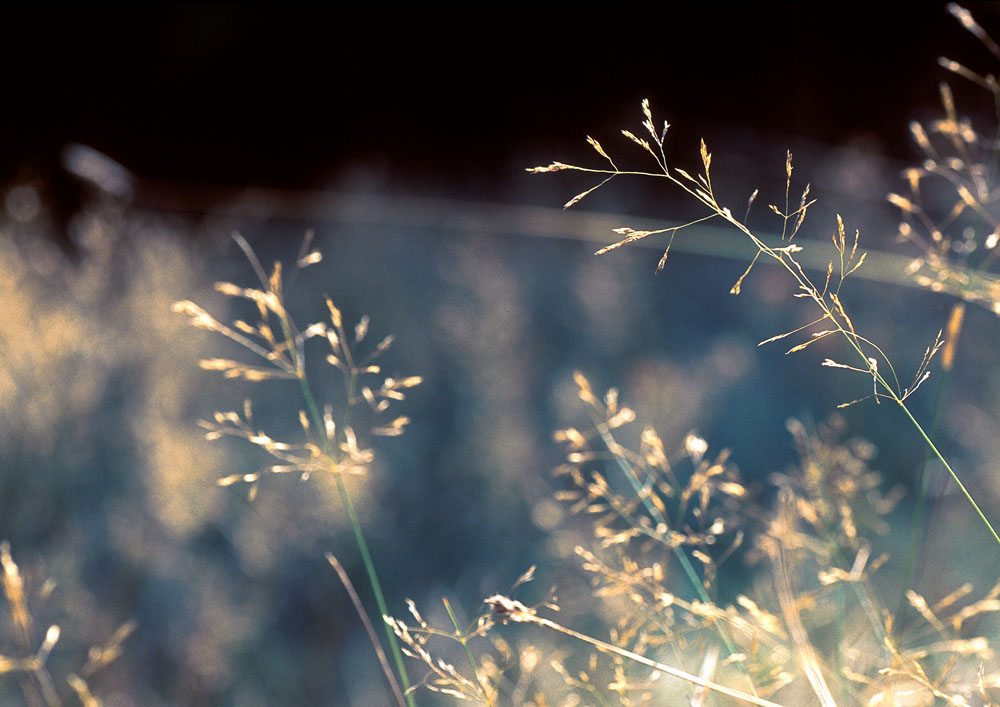
bent grass inflorescences
image taken by the side of a path
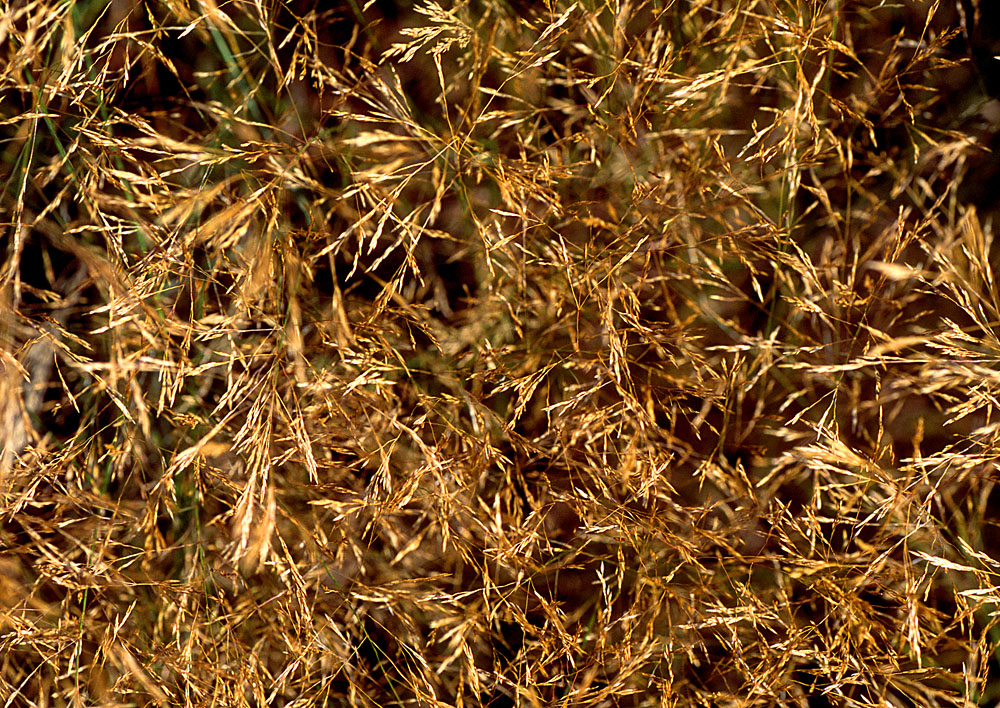
bent grass inflorescences
at the end of the summer
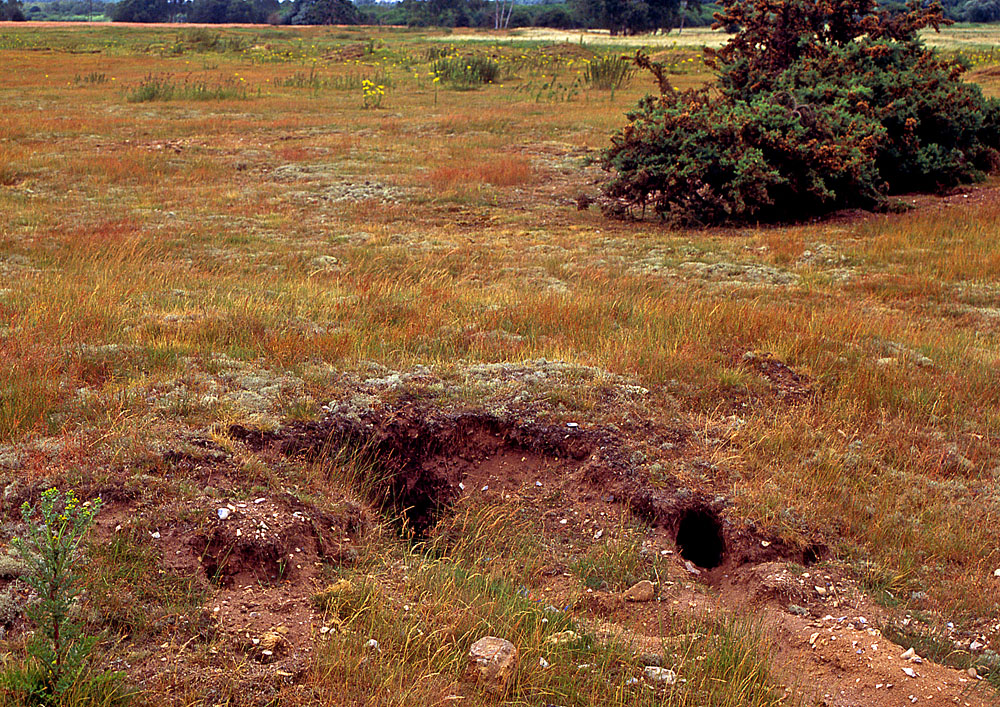
Breckland, lowland heath
between Norfolk and Suffolk, UK
with rabbit burrows
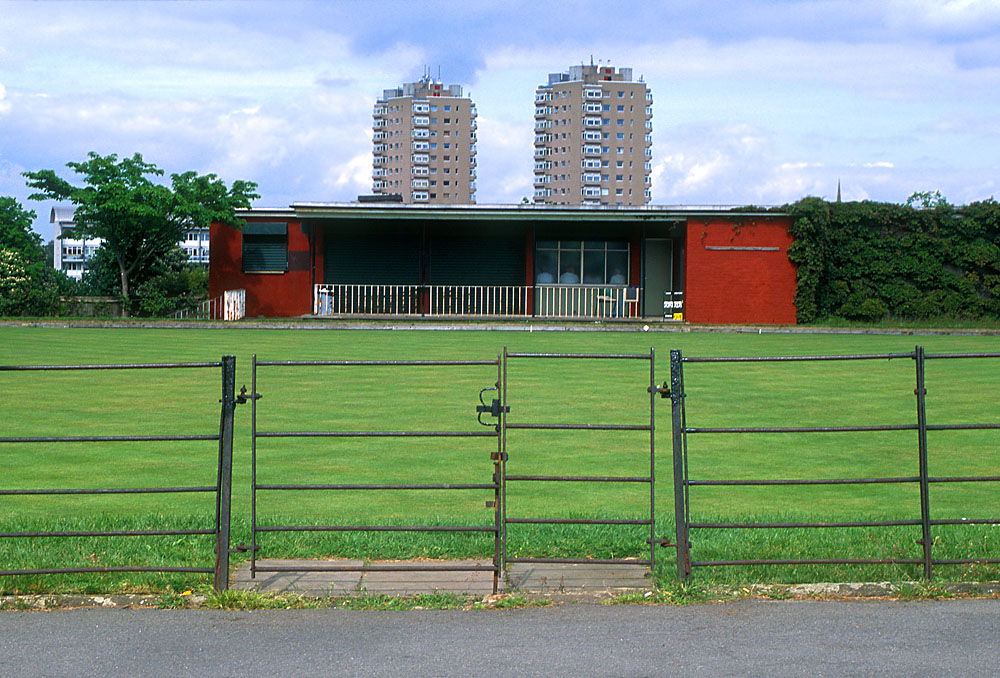
Brockwell Park bowling green
home of the Ladies Bowling Club

Paynes Turf, Essex, UK
a turf field ready for harvest
the spindle tree
a clash of colours
spindle, the tree
Soundtrack: robin bird song, recorded by Geoff Sample
spindle tree, the people
Music by John Cage played by Boris Berman
The spindle is a small tree, found mainly in hedgerows and old woods. It prefers lime rich soil. In Britain it is most common in the south and the Midlands. For most of the year it is completely inconspicuous, standing in the background, its small leaves and flowers growing unremarkably during spring and summer until a cold weather spell in the autumn makes it burst into amazing colours. The shocking pink berries clash garishly with the bright orange seeds and the leaves turn magenta, crimson, purple and gold before falling. Over the winter, the fruits are eaten by birds and the tree's bare branches fade out of sight once again.
Most of the spindle is poisonous, particularly the bark, leaves and the seeds' orange skin. These contain substances with purgative properties which are toxic in large doses but not deadly. Its latin name “Euonymus europaeus” reflects this: in ancient greek mythology, Euonyme is the mother of the Furies.
Moreton Woods in Herefordshire, UK, is a small ancient woodland with a long history. Its owner Paul Morton is gradually returning it to its former self. Paul practices traditional woodland management that maintains the forest and encourages biodiversity. Using a purpose-built metal kiln, he makes barbecue charcoal using coppiced hazel and sycamore weed trees. His kiln has chimneys and bottom vents to create an air flow and keep the fire burning in the centre. Wood is carefully arranged around the centre and when the kiln is nearly full, Paul adds a tin filled with spindle shoots to become artists charcoal. Burning logs are dropped to the bottom of the kiln and the lid is closed. The wood is left to burn slowly over twelve hours. The vents and chimneys are then closed to kill off the fire and the charcoal is retrieved one or two days later.
In the past spindle was used to make wool "spindles" before the spinning wheel was invented and craftswomen worked its pliable wood into baskets. Artist Lizzie Farey had not used spindle beforehand. Her work ranges from traditional objects to abstract compositions using various woods. She grows her own willow for a range of textures and colours. Starting with a willow frame as support, she wove the spindle shoots in free-flowing style, gradually curving them into shape. Once the spindle structure was strong enough, she cut out the willow frame and the basket's final form gradually evolved in her hands.
Below, you can listen to Paul Morton, owner of Moreton Woods, talking about ancient woodland conservation, traditional crafts and living in the woods. The interview was recorded in May 2008.
1: the woods
play the above interview in a new tab
2: woodland crafts
play the above interview in a new tab
3: life in the woods
play the above interview in a new tab
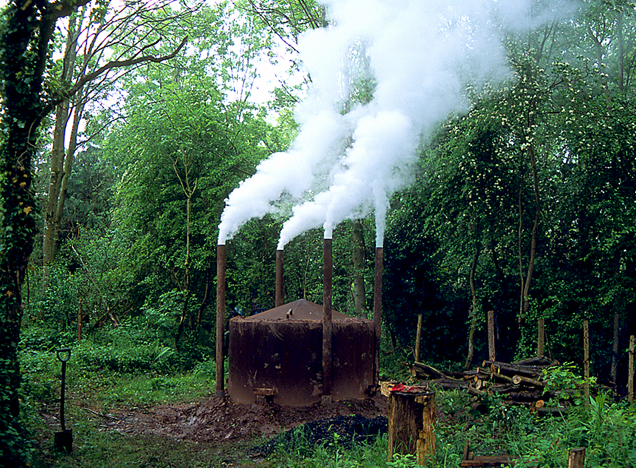
Paul Morton's charcoal making
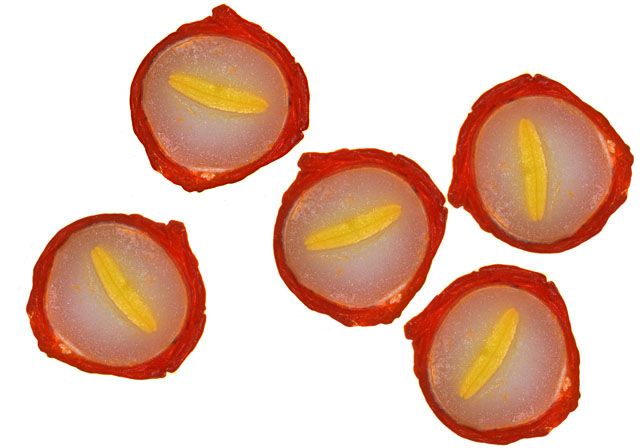
spindle seeds
cut in half, showing part of the embryo
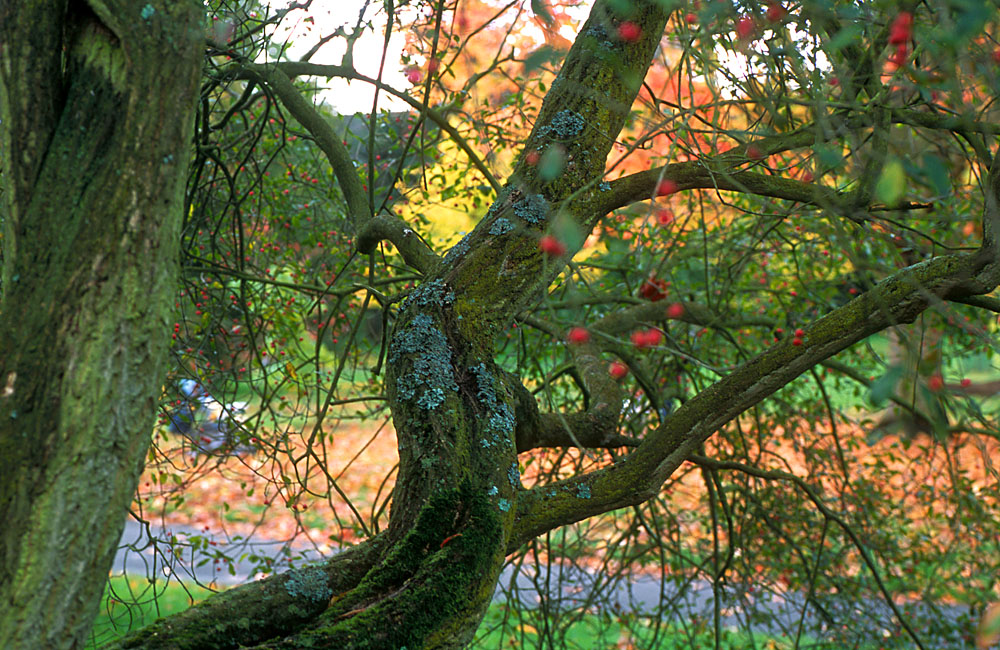
old spindle tree
at Kew Gardens, London
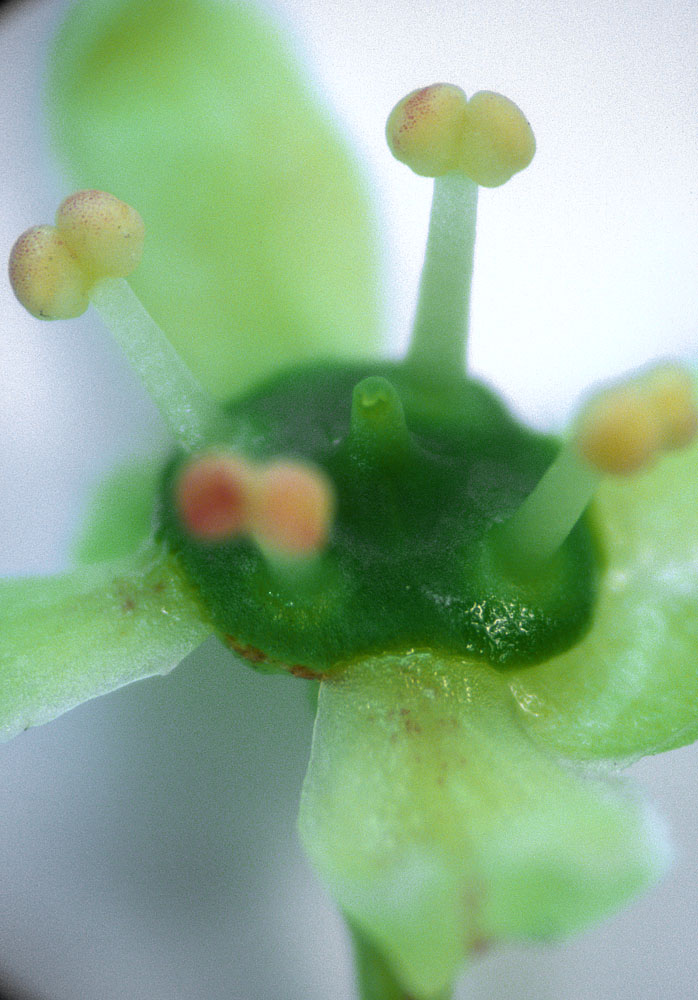
spindle flower
in close-up, showing its amazing geometry

spindle berries and leaves
showing their beautiful autumn colours

artists charcoal
made from spindle by Paul Morton
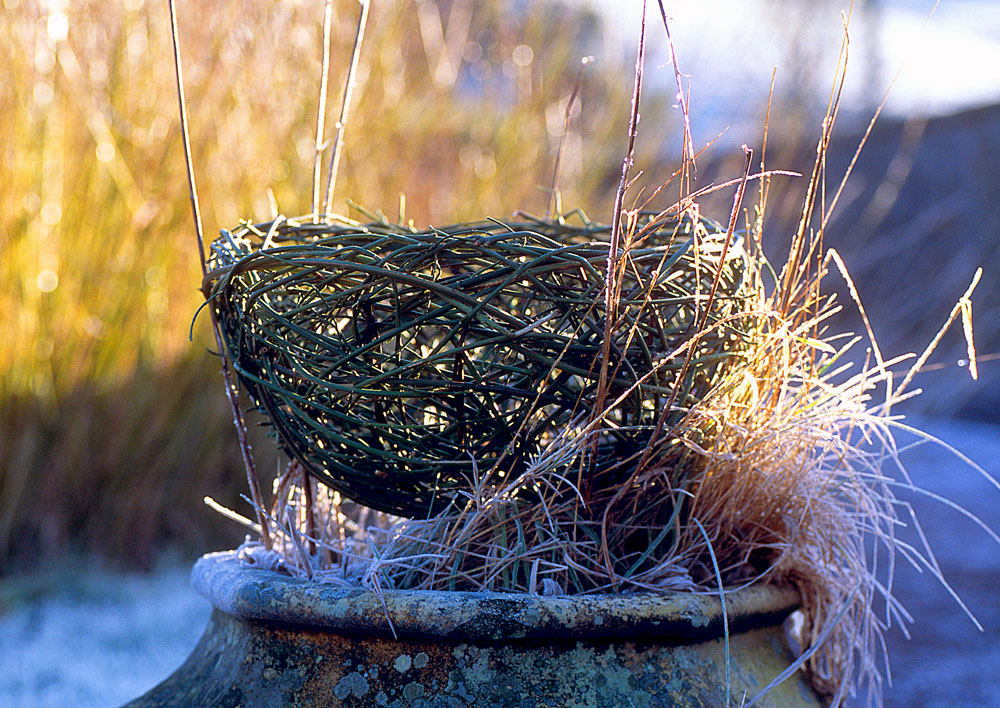
spindle basket
made by Lizzie Farey
the London plane
a friendly giant
London plane, the tree
Music by Jon Hassell, Sub Rosa
London plane, the people
Music by Phil Dadson and From Scratch, by Bary Hall and The Burnt Earth Ensemble, by Uakti playing a song by Elomar
The London plane is a hybrid tree, probably a cross between the oriental and American planes. The oldest London trees are in Berkeley Square, dating 1789. As the city grew, tree planting followed the building of new streets and now more than half the trees in London are planes. Many London parks were created in the 19th century, when large numbers of people lived in overcrowded slums with no gardens or access to the countryside. The public parks and squares were seen as the green lungs of the expanding city.
The main reason for the tree's popularity is its ability to flourish in an urban environment: It is long lived, with a tall and airy crown creating a pleasant shade. It is very wind resistant and tolerant of difficult soil conditions and road digging. As well as coping with summer drought, it is fairly pest and disease free. Above all, it copes with pollution. The main factor protecting it from sooty pollution is not its habit of shedding bark but rather its glossy foliage. Young leaves are covered in fine hairs which are able to trap grime. When the leaves mature they naturally lose the hairs, releasing the pollutants before developing a tough leathery skin which is easily washed by the rain.
Tree surgery on large plane trees is spectacular work: large branches flying off, lots of noise and dust from the shredding, workers shouting and taking over the street. We often feels emotional when a big old tree is being cut but planes are very resilient and usually respond well to pruning. The work itself is arduous and demands skills, such as a head for height and knowing how to handle dangerous machinery. The pollen and hairy leaves of plane trees can cause hay fever and coughing fits, inducing asthma like reactions. This is why surgeons prefer working on them in the autumn or winter. It is one of the occupational hazards of the job.
There are three main types of tree surgery: crown reduction, crown lifting and pollarding. Crown reduction lowers the height of the tree. Branches are shortened, usually by 25 to 30 percent. Pollarding is the removal of all the crown branches close to the main frame. This is usually done every two to three years and only some trees are suitable: planes, horse chestnuts, willows for example. Both crown reduction and pollarding slow down the tree's growth, including its roots size. Crown lifting is the removal of the crown's lower branches to allow for buildings or traffic underneath the tree. In narrow streets sometimes both crown lifting and crown reduction are necessary, producing tall and narrow trees quite unlike the ones allowed to grow naturally.
The timber of the plane tree is called lacewood because of its ornate grain which has an attractive, finely textured appearance, reminiscent of old lace. Lacewood is a strong timber, mainly suitable for indoor furniture and used both in its solid wood form or as an unusual decorative veneer. The timber was once valued but it never achieved the popularity of oak or some of the tropical hardwoods.
Martin Grierson is a London designer and maker of exquisite bespoke furniture. In his workshop he has two lacewood boards cut from large trees. He has yet to be asked to make a piece of furniture in lacewood and he is not sure he will ever have the chance to use them.
Below, you can listen to Bob Noakes, tree surgeon, talking about his work. The interview was recorded in December 2008.
1: tree surgery
play the above interview in a new tab
2: the arborist
play the above interview in a new tab
3: tree stories
play the above interview in a new tab
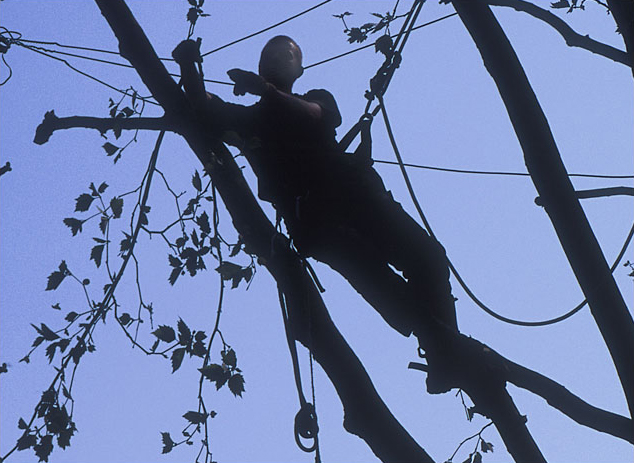
City Suburban Tree Surgeons, London
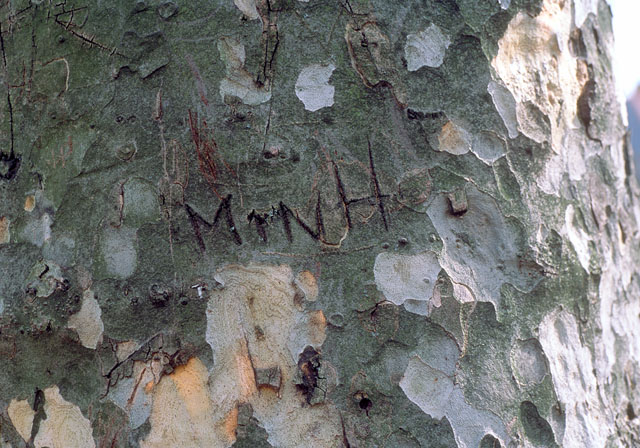
London plane's bark
close-up with graffiti
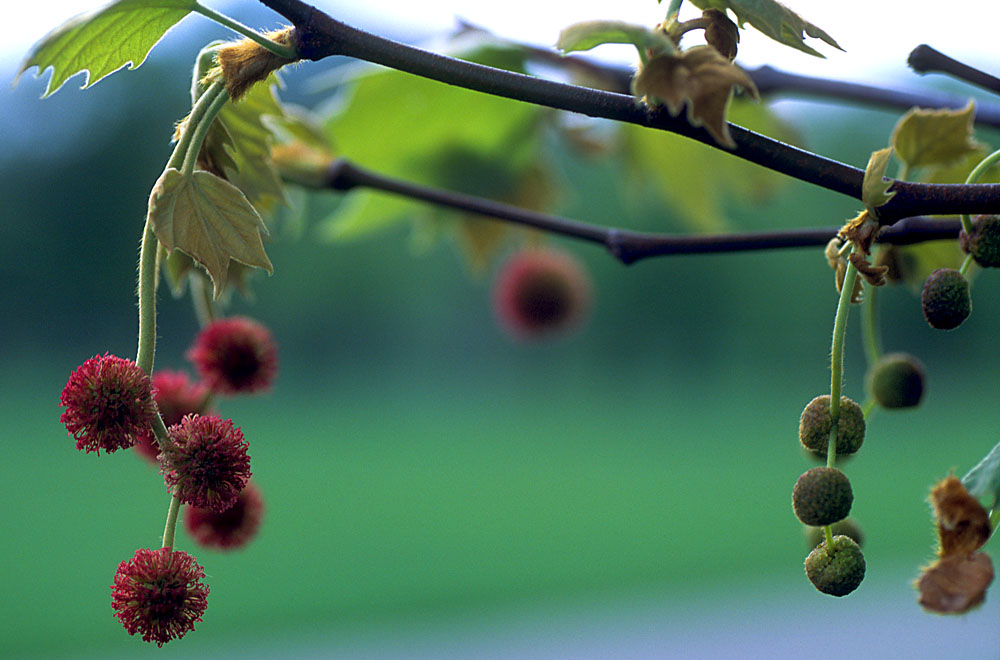
London plane's flowers
the female flowers are on the left and the male ones on the right

a supermarket car park
with London planes at regular intervals
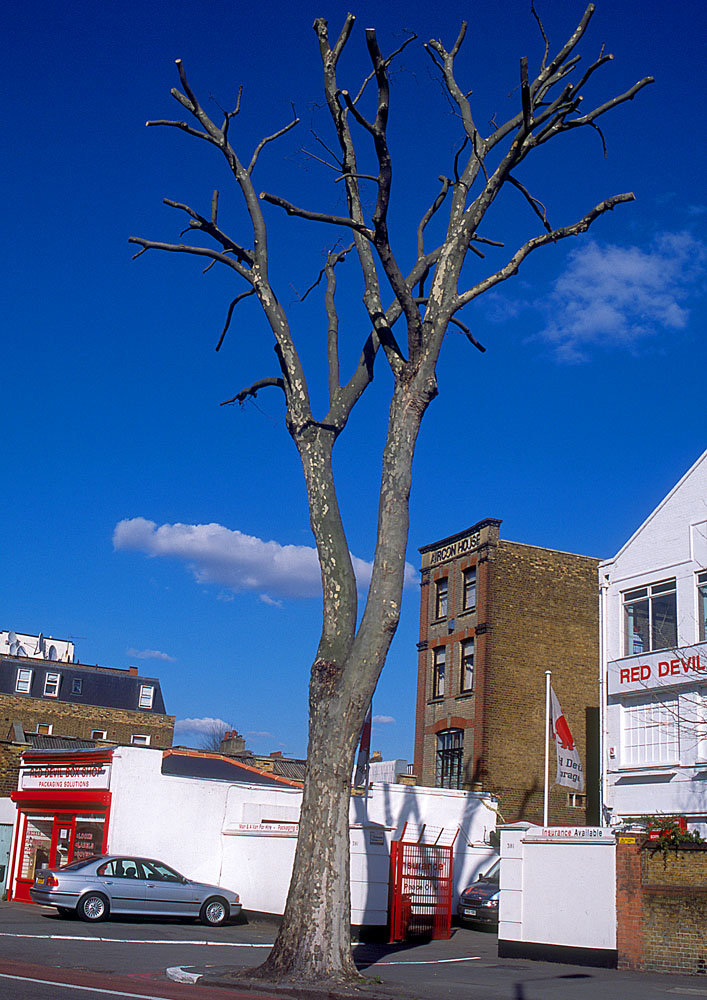
a plane tree recently pollarded
in a south London street
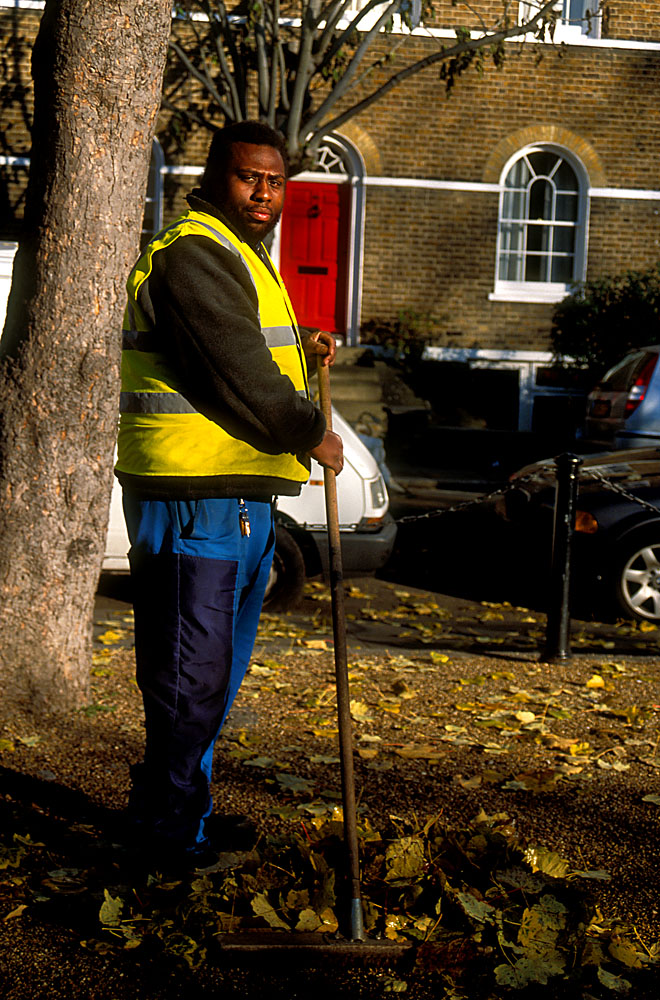
London street cleaner
sweeping plane tree leaves in the autumn

avenue of plane trees in double rows
Hyde Park, London
five seeds and their embryos
the Millennium Seed Bank
the Millennium Seed Bank
Narration: John Dickie
five seeds and their embryos
Françoise spent time learning from scientists at the Millennium Seed Bank Project, part of the Royal Botanic Gardens. There, she practiced dissecting and photographing seeds under the microscope. Some of the seeds were minuscule, such as the bent grass seeds and she needed help to reveal the plants' embryos.
She also documented the work of the Millennium Seed Bank Project. The first video above, made in 2009, shows scientists at work and describes the principles of seed conservation, together with the Project's long term aims. It is narrated by John Dickie, Head of Seed & Lab-based Collections at the Millennium Seed Bank. A series of short animations about seeds and embryos punctuates the documentary sections.
The second video shows the seeds and embryos of the five plants featured in Hop, Stock & Bent. It is truly amazing to see the tiny embryos that even some of the largest trees originate from.

hop seeds
each embryo is pale and curled up inside the seed

scented stock seeds
the embryos' roots are now germinating
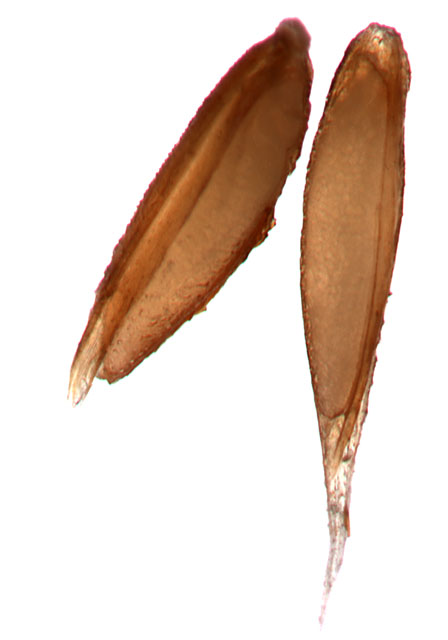
a bent seed cut in half
the minuscule embryo can just be seen near the top
most of the seed consists of endosperm, a food store for the embryo

fresh spindle seeds cut in half
the seeds are not long lived and need special treatment to remain viable in storage
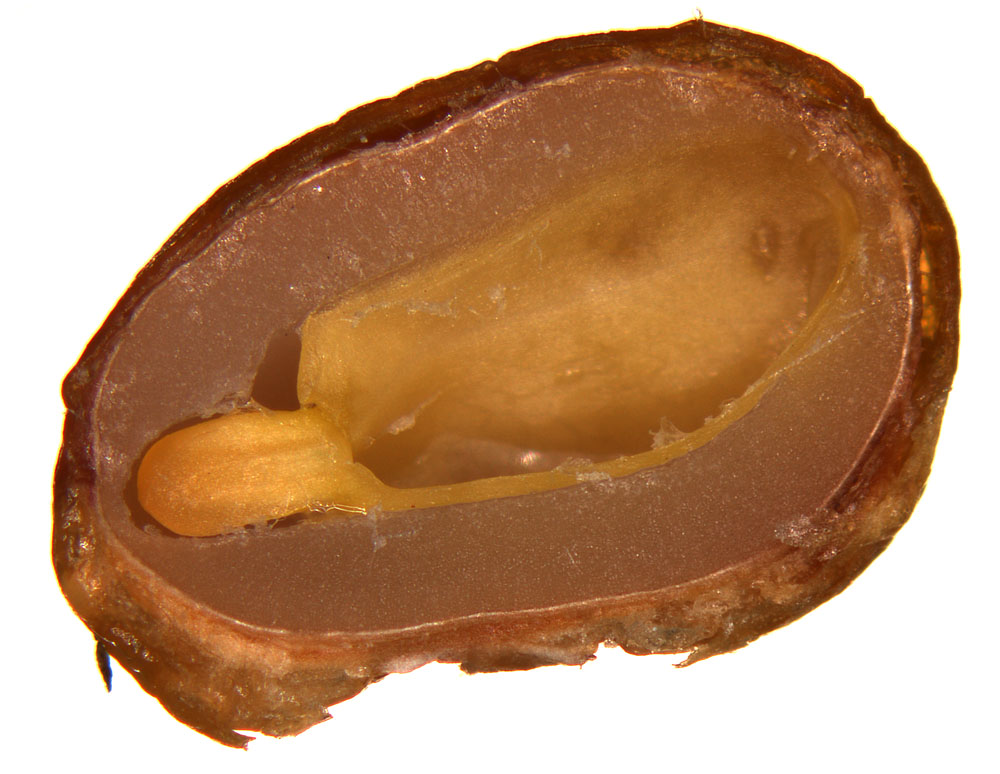
spindle seed cut in half
the embryo looks dry and unlikely to be viable
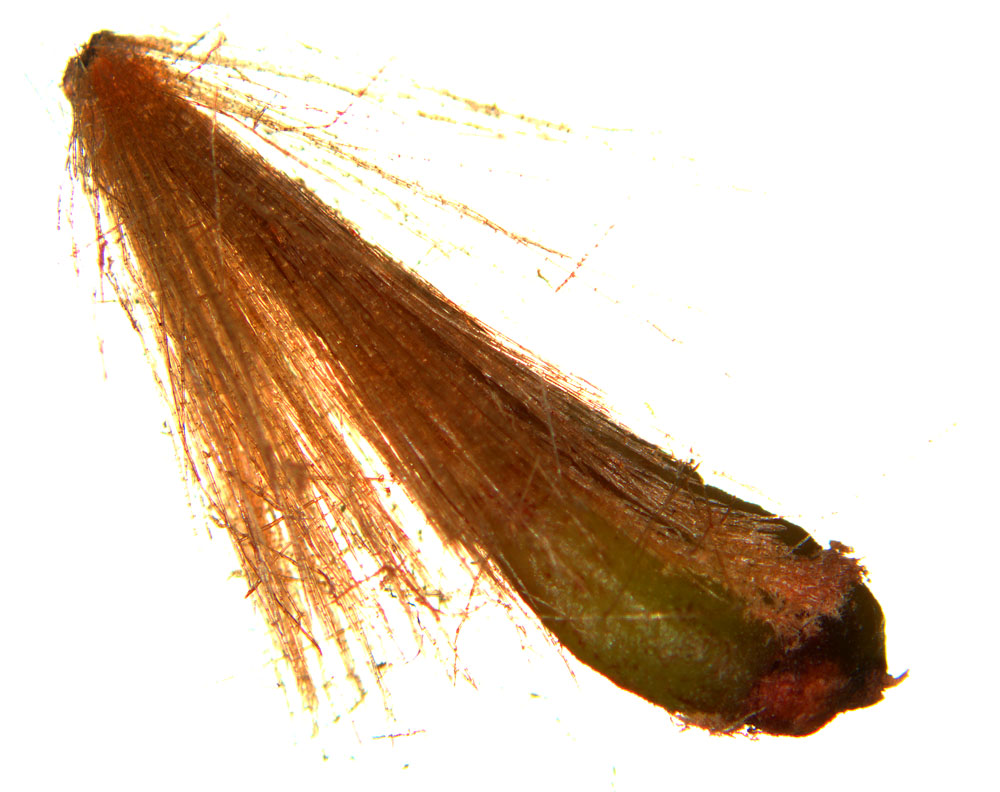
London plane seed
the seed is actually a fruit with two seeds fused together
